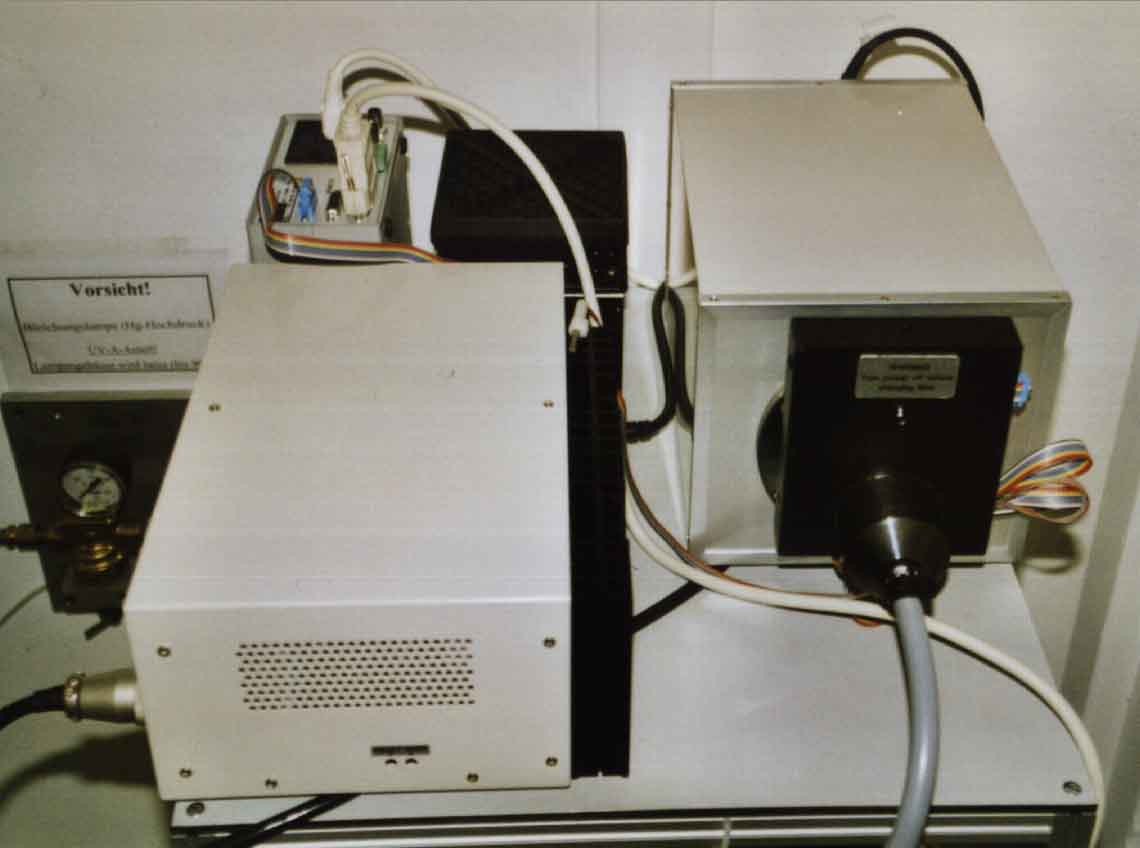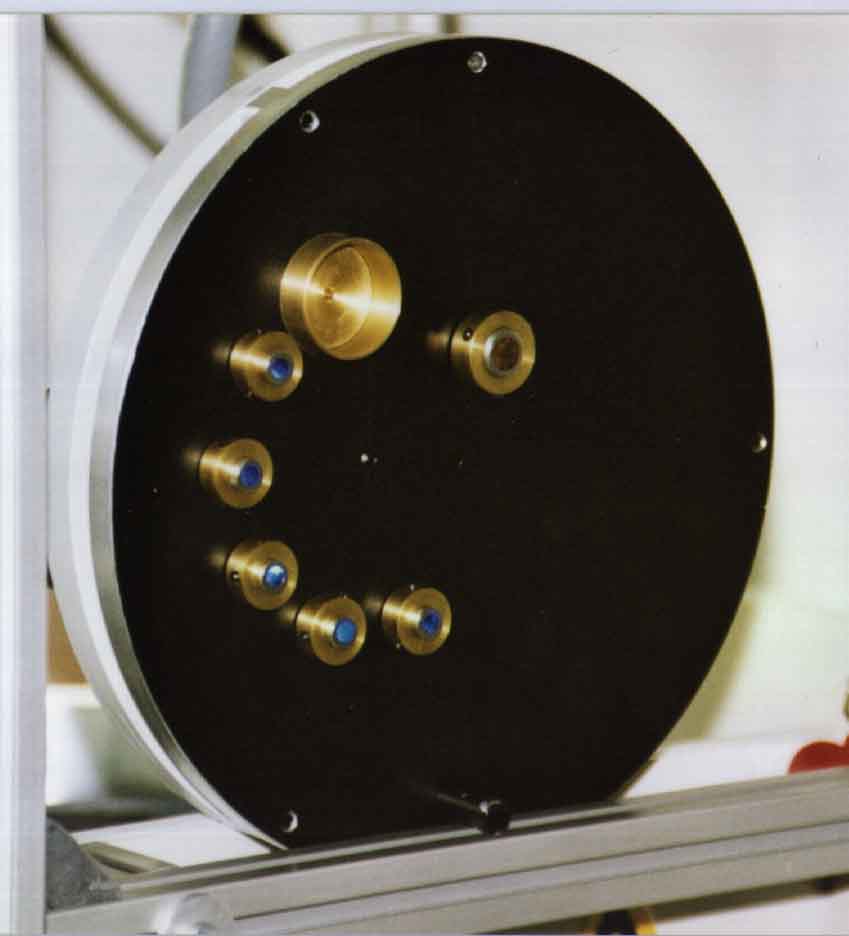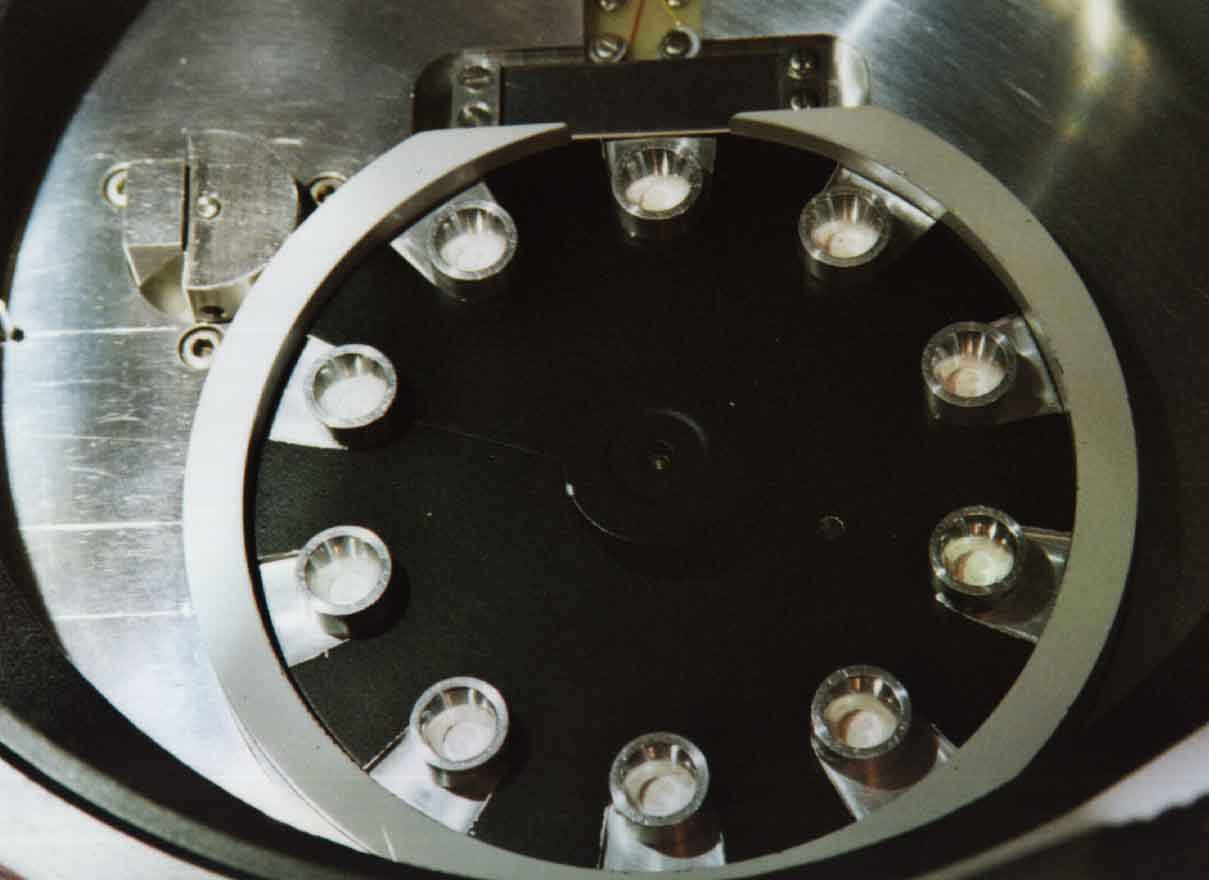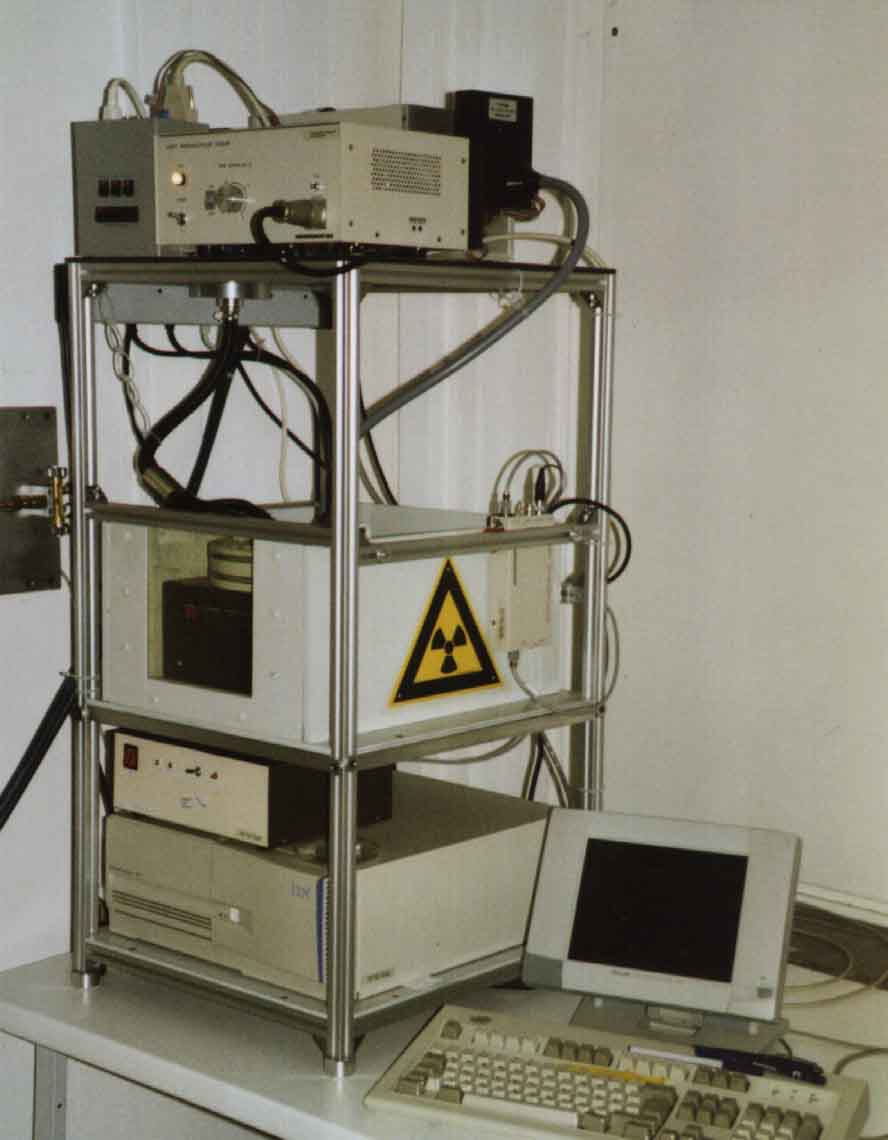
An ongoing cooperative project
with the Saxon Academy of Sciences
at Liepzig
As an example of a cooperative venture based on the very flexible configuration of the 1100-series readers, a new automated measurement system for radioluminescence developed as part of the doctoral research of Gunther Erfurt under the direction of Matthias Krbetschek at the Saxon Academy of Sciences at Liepzig shows the possibilities of the 1100-series platform. In the new technique of radioluminescence dosimetry developed there, it became desirable to build a multi-sample measurement system where a number of samples could be irradiated and measured at one time. The 1100-series base unit proved to be a suitable platform for development. Daybreak modified the 1100 to move separately a two-part sample platter, the lower part having ten beta sources, the upper carrying the samples, and provided a platter design to our collaborators. By means of a coaxial shaft where the phasing of the two platters was controlled by the host computer, it is possible to turn the sample irradiation 'on and off' by moving the sources under a shielded portion of the sample platter. Several papers, submitted or in press, may be downloaded below. We provide a few photos of this instrument to supplement the papers. This is intended as a joint venture so that anyone interested in this instrument may be able to purchase one constructed by the Saxon Academy of Sciences on a Daybreak platform. In this instance of a promising technology, Daybreak absorbed the development costs, something we are willing to do if there is an intriguing line of research that may someday bear fruit as a commercial instrument.
There are three useful papers including background and the application worth looking at:
paper 1 G. Erfurt and M.R. Krbetschek, Studies on the physics of the infrared radioluminescence of potassic feldspar and on the methodology of its application to sediment dating
paper 2 G. Erfurt and M.R. Krbetschek, IRSAR--A single-aliquot regenerative-dose dating protocol applied to the infrared radiofluorescence (IR-RF) of coarse-grain K feldspar
paper 3
G. Erfurt, M.R. Krbetschek, V.J. Bortolot, and F. Preusser, A
fully automated multispectral radioluminescence reading system for geochronometry
and dosimetry
Gunther Erfurt won the student prize for a poster
at the 2002 LED Conference at Reno for this work. He provided some
photos so that you may get a better idea of the working of the instrument.
Read the last paper cited above first, before proceeding to the photos
below, as a more informative key.

front view (you see the daybreak base behind the
Pb glass window)

detector unit (left->thermoelectric cooler (Hamamatsu)
right->PMT with
housing, the light guide (grey) is connected
to the automated filter wheel,
the black thing behind the cooler is the housing
of the 250 watts OSRAM HTI
bleaching lamp, left to the lamp is the control
unit for the filter wheel)

opened lid of the reader (the 5 light guides are
for bleaching, the bigger
one is the RL fibre, also you can see the sample
input), this lid is made
of aluminium (black) to absorb electrons and
betas within an low Z material
and the grey part behind is 1 cm Pb

normal lid position (for radiation protection
reasons the sample input is
very small but the sample input is easy to handle,
you again see the 5
bundles for bleaching and the grey guide for
RL to the PMT)

sample (middle) and source (left) platter with
Pb shielding (right)

view of the source platter built into the Daybreak
reader

view of the sample and source platter system
(one can see the TL oven which
could also be used in this instrument)

The complete system.